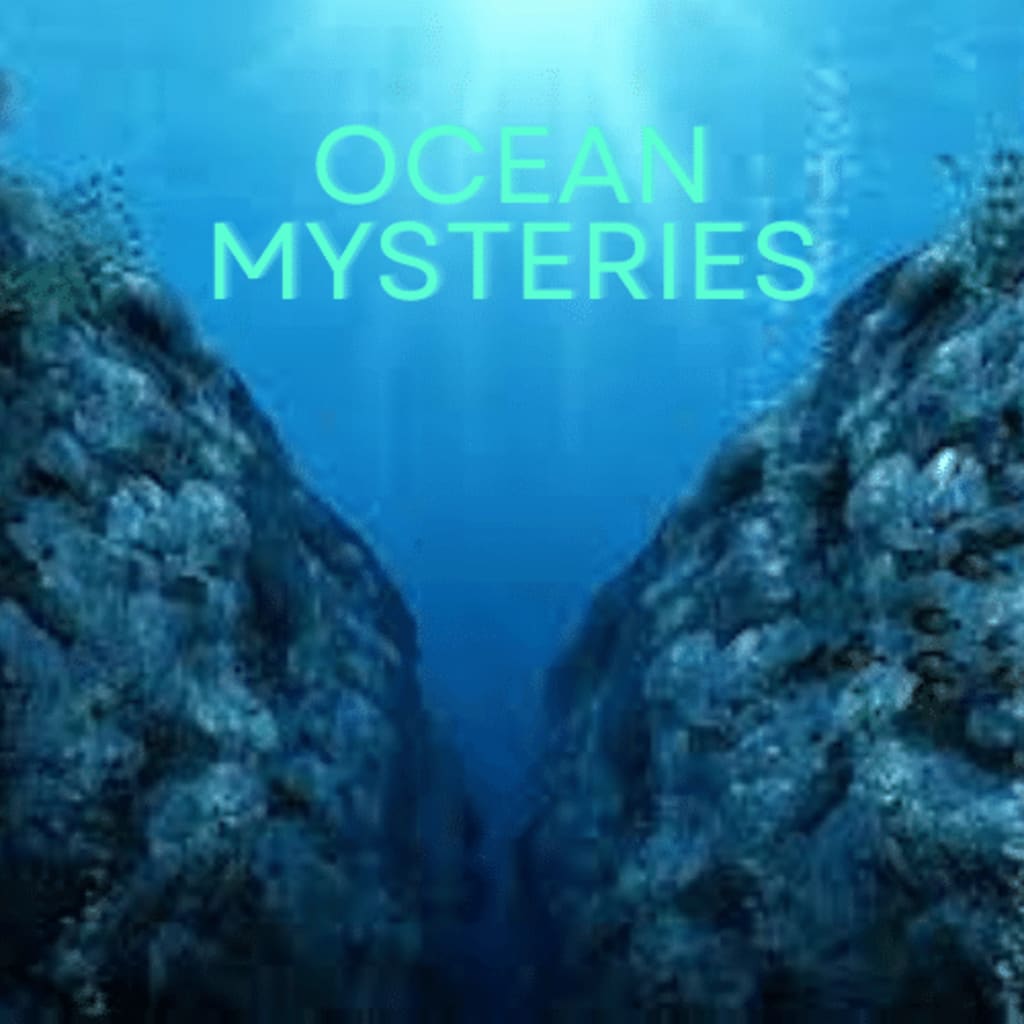The Mariana Trench: Earth's Mysterious Abyss Revealed
What lies beneath...

Deep beneath the vast expanse of the Pacific Ocean, a realm of unparalleled mystery and awe awaits. The Mariana Trench, a crescent-shaped chasm plunging to depths more profound than the height of Mount Everest, remains one of the most enigmatic places on Earth. In this article, we will embark on a journey to uncover the secrets hidden within the Mariana Trench, exploring its formation, the extreme conditions it harbors, and the remarkable creatures that defy nature's limits to call it home.
A Geological Marvel
The Mariana Trench, located near Japan in the Pacific Ocean, was first discovered in 1875 by the British Royal Navy's HMS Challenger. Stretching approximately 2,550 kilometers long and 69 kilometers wide on average, it features the Challenger Deep, its deepest point, which reaches an astonishing depth of 10.9 kilometers below sea level. To put this into perspective, if you were to drop a stone into the trench's waters, it would take over an hour to reach the bottom.
The trench's formation remains shrouded in mystery, but scientists believe it was shaped over millions of years through the geological process of subduction. This occurs when one tectonic plate, bearing oceanic crust, is forced beneath another, descending into the Earth's mantle. The result is an underground labyrinth, and subduction is also responsible for the 42 submarine volcanoes in the Mariana Islands.
Life at Unfathomable Depths
The Mariana Trench is a testament to life's tenacity and adaptability. As we venture deeper into the ocean, the phenomena of deep-sea gigantism become apparent. Creatures and microorganisms thrive here, often growing to extraordinary sizes that baffle scientists. The trench, however, poses a unique challenge, as it plunges into an abyss of unimaginable extremes.
Near the trench's bottom, temperatures hover around 1 to 4 degrees Celsius. An astonishing 90% of the trench is cloaked in pitch-black darkness, and the pressure at its deepest point reaches an astounding 8 tons per square inch – roughly equivalent to the pressure inside a 12-gauge shotgun's barrel when fired. The effects of such extreme conditions on exposed humans are nearly incomprehensible.
Exploring the Abyss
Despite its allure, only four successful missions have ventured to the very bottom of the Mariana Trench. The first was in 1960 when the United States-owned bathyscaphe Trieste, piloted by Don Walsh and Jack Piccard, reached the trench's bottom. Their 20-minute descent did not allow for photographs, but they claimed to have spotted a flatfish swimming at the very bottom, suggesting life's existence in what was considered uninhabitable conditions.
This mission was followed by unmanned descents in 1996 and 2009. Until 1960, humans had not returned to the trench's depths due to the lack of suitable vessels and the immense risks posed by the crushing pressure. However, in 2012, film director James Cameron, known for blockbusters like "Avatar," "The Abyss," and "Titanic," piloted the deep-diving submersible "Deepsea Challenger" to the trench's deepest point – the Challenger Deep.
Cameron's expedition was not without extreme risks, including the fear of the pod being unable to withstand the pressure during descent. Nevertheless, he reached the Challenger Deep on March 26, 2012, and though the abyss proved desolate and barren, Cameron's journey did yield some important discoveries.
Discoveries and Hope
While the Mariana Trench didn't reveal monstrous creatures, Cameron's expedition led to the discovery of 68 new species. Remarkably, the trench is home to creatures that have adapted to its extreme conditions. Among these are the nearly transparent telescope octopus, the ferocious-looking anglerfish, the endearing Dumbo octopus, and an unseen species of snailfish found at a depth of 8,145 meters – a record-breaking depth for a fish.
Despite the absence of monstrous creatures, the hope remains that undiscovered marvels are lurking in the trench's depths. Creatures like sea cucumbers, expertly camouflaged in the sand, continue to elude our sight, showcasing their ability to adapt to the trench's unforgiving environment.
Sounds from the Abyss
In 2015, a microphone was sent to the Challenger Deep to capture the sounds of this remote underworld. For three weeks, it recorded a symphony of noises, from earthquakes and boat traffic to the haunting moan of a distant whale. The origin of this enigmatic sound remains uncertain, though scientists suggest it may belong to a baleen or Bryde's whale. These soundwaves traveled for miles, echoing through the trench's abyssal expanse, highlighting its acoustic mysteries.
The Future of Exploration
As we look ahead, the exploration of the Mariana Trench continues to captivate the human imagination. Plans for future missions include deploying more sophisticated instruments, cameras, and microphones to delve deeper into its secrets. With each descent, we inch closer to unraveling the mysteries of this extraordinary realm and discovering the secrets that lie hidden in the abyss.
The Mariana Trench stands as a testament to Earth's capacity for astonishment. In its depths, we find not only the awe-inspiring forces that shaped our planet but also the remarkable creatures that have adapted to its harshest conditions. James Cameron's historic journey to the Challenger Deep, along with subsequent missions, has expanded our understanding of this enigmatic place.
As we continue to explore the Mariana Trench, we may one day unlock the secrets of its deepest reaches, shedding light on the mysteries that still elude us. Until then, the trench remains a symbol of Earth's enduring capacity to astonish and inspire, reminding us of the boundless wonders that lie beneath our oceans.





Comments
Emerson Rose is not accepting comments at the moment
Want to show your support? Send them a one-off tip.